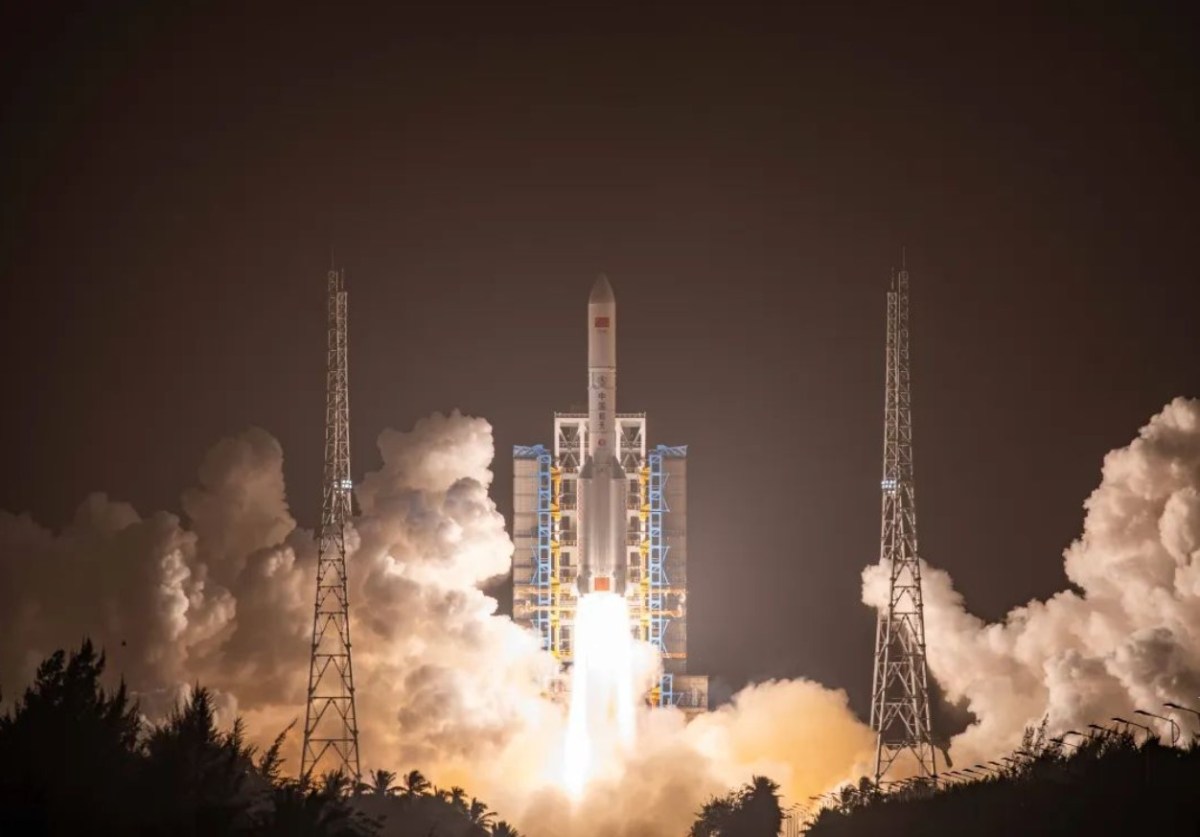HELSINKI — China has established a new force of the People’s Liberation Army, with the reorganization to have repercussions for how its space forces are commanded.
Xi Jinping, China’s president and chairman of the Central Military Commission, launched the People’s Liberation Army’s (PLA) Information Support Force (ISF) April 19. The ISF is effectively replacing the Strategic Support Force (SSF), which commanded the PLA’s space forces.
Xi stressed that the information support force is a new, strategic branch of the military and a key pillar in coordinating the construction and application of the network information system, Chinese state media reported.
The official PLA announcement stated there are now four services: the Army, Navy, Air Force and the Rocket Force. Furthermore there are four arms, including the Aerospace Force, the Cyberspace Force, the Information Support Force and the Joint Logistics Support Force. The ASF was formerly the Aerospace Department of the Strategic Support Force.
This means, with the PLA following a strict protocol order, that the Aerospace Force (ASF), which commands the PLA’s space forces, is now the senior force, according to a comment on the development by Brendan Mulvaney, director of the China Aerospace Studies Institute (CASI), a Department of the Air Force think tank.
Mulvaney notes that the Chinese see the “Information Domain” as a domain of war unto itself. This makes it equal to the physical domains of air, land, sea, and space.
The move is the biggest PLA reorganization since 2015, when the SSF was created. That Force was established to consolidate space, cyber, electronic, and psychological warfare capabilities under one umbrella.
The effective removal of the SFF and the introduction of the new ISF suggests a reorganization aimed at improving operational efficiency and integration. By centralizing information operations, including space, the PLA could aim to enhance coordination and control over these domains.
The move could also be, in part, a response to widely reported corruption issues with the PLA. In a possibly move, two senior officials at the top of China’s main space contractor were removed in recent months.
Impact on PLA space forces?
It is unclear how the ISF will operate and what forces and capabilities it will command. Likewise, its impact on the PLA’s space forces cannot be determined from the outside.
The move appears to represent a strategic shift towards prioritizing information warfare, which includes cyber operations, electronic warfare, and potentially space aspects such as satellite communication and reconnaissance.
Furthermore, the development could impact command and control mechanisms over its space assets. This could influence satellite operations, space surveillance, and other space- military activities.
China has noted and responded to developments surrounding the Russian invasion of Ukraine in February 2022, including the use of Starlink by Ukrainian forces and the role of remote sensing data.
The country has in recent years greatly expanded its satellite reconnaissance capabilities, generating concern among the U.S. Space Force. China plans to establish two separate low Earth orbit communications megaconstellations and has plans for a space-ground integrated information network, or SGIIN.
The latter seeks to create an integrated system which combines communications, remote sensing, navigation, weather and other satellite capabilities. The PLA is also taking a strategic approach to operations such as on-orbit refueling.
The reorganization may also influence China’s ability to protect its own space assets and how it potentially develops capabilities that may threaten adversaries’ space-based systems. Geostationary orbit is one area in which games of “cat and mouse” are taking place between space powers including the U.S., China and Russia.
The move may also affect how the PLA coordinates its space operations with its Army, Air Force, Navy and Rocket Force.
